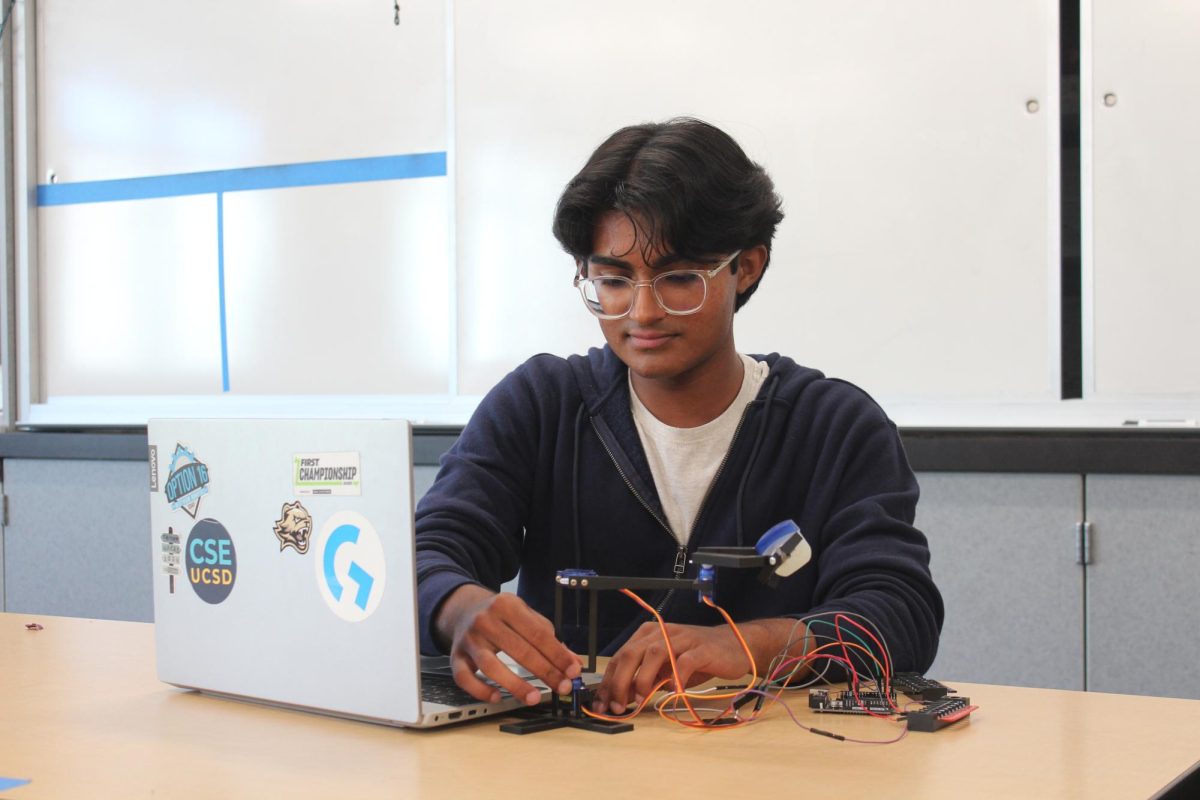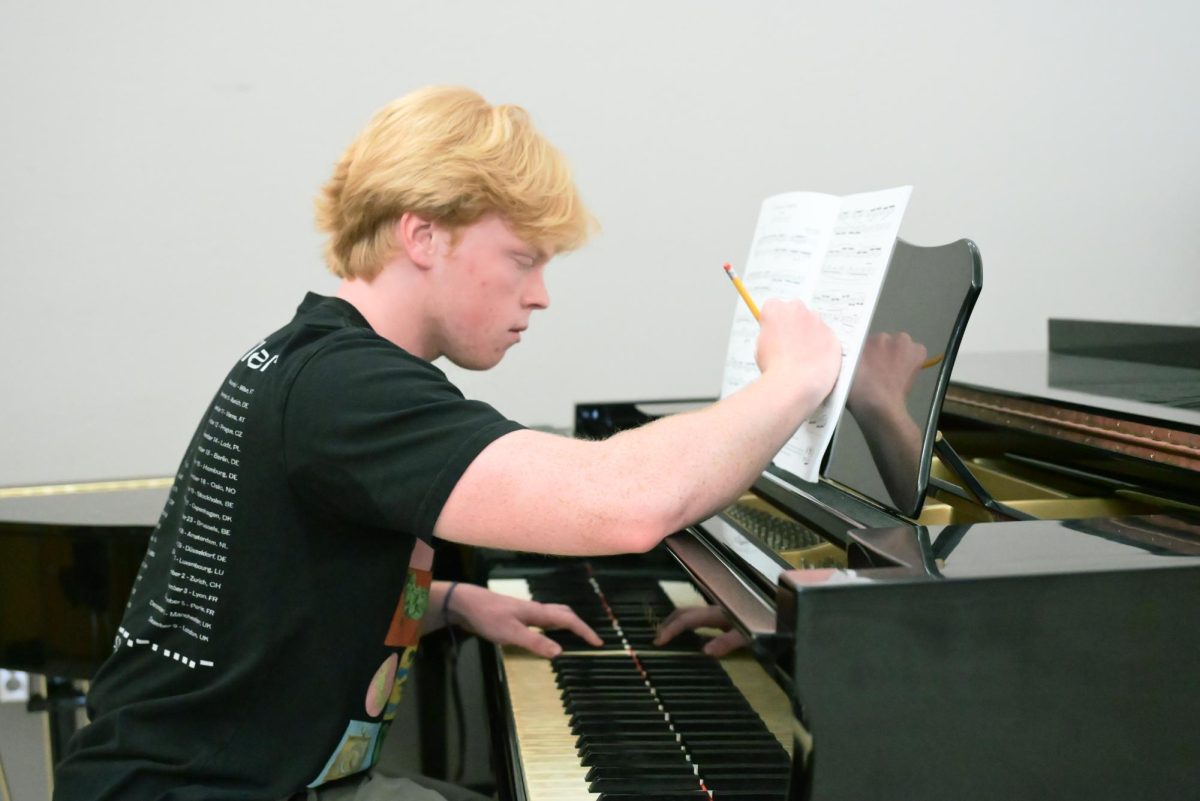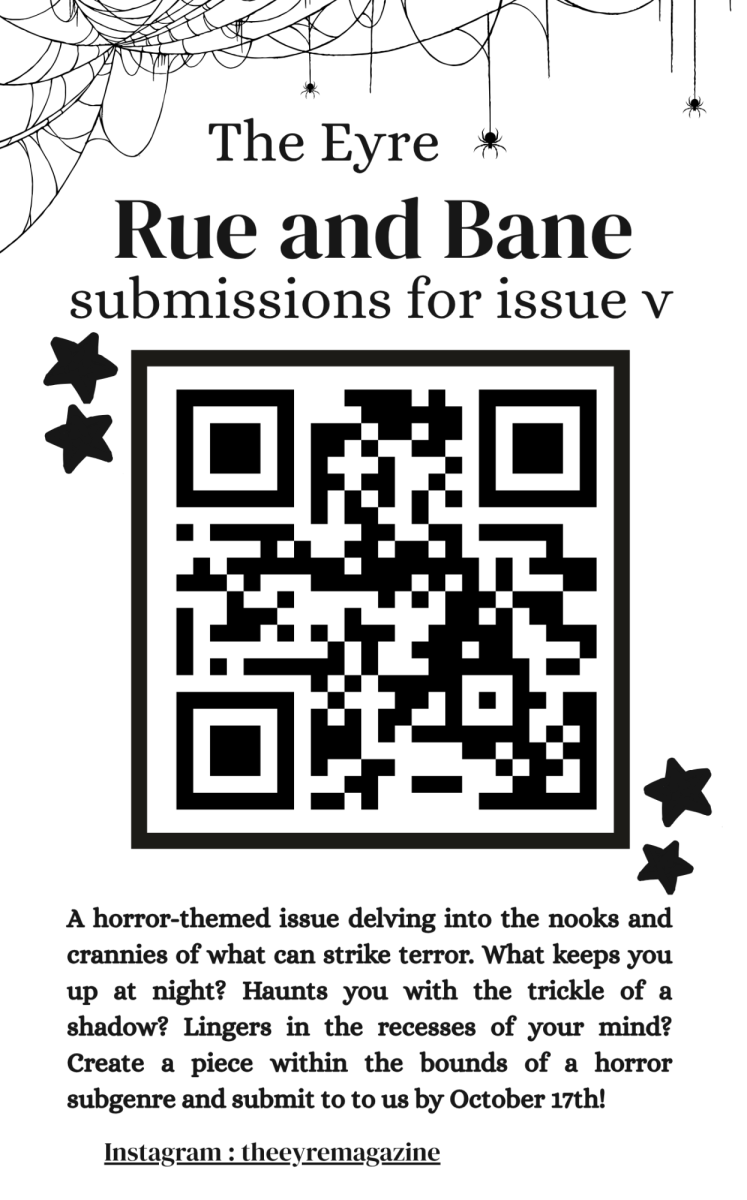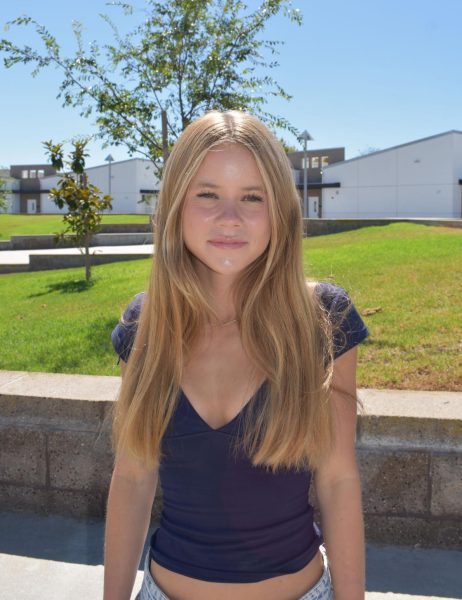“Brown Image”, a mural by Victor Ochoa caught the eyes of Gianna Carpenter (11) as she walked with her tour group through Chicano Park. The five-story mural with tones of gold that glittered in the sun detailed a Chicano lowrider car club, with paintings of people in the club and a diagram of the inside of a lowrider car. “Brown Image” is not just a mural of cars, though. Carpenter says it represents the Chicano community and, being of Mexican descent, she feels a personal tie with the piece.
“I have many family members that have ridden [lowriders] or been a part of that,” Carpenter said.” “Many Chicanos or Mexicans will have that type of car because it’s kind of expensive. If you have one, it’s seen as luxury because it’s a car that shows they were able to afford something that was seen as more expensive. And it just shows that they were able to make something in America for themselves, distinct to who they are.”
Students in the Ethnic Studies class visited Chicano Park on Nov. 2. They visited the museum in the park and walked outside with a tour guide to see the murals. In class, the students have been learning about oppression and seeing where it applies to our nation’s history. In the 1970s, the California Department of Transportation built the I-5 freeway and the Coronado Bridge, separating the community of Barrio Logan and displacing families. Through protesting, the Chicano people were able to reclaim the land under the bridge, which was turned into Chicano Park, where artists used murals to tell the story of their history and culture. Ethnic Studies teacher Andrea Champoux said that the park tells a story of the Chicano people and how they were able to come back from hardship.
“It is a story of oppression, but also a story of fighting back, taking ownership, and that idea of self-determination,” she said. “Now, the murals and the park are a landmark that [San Diego] can’t build upon or take away again.”
Lynn Azuma (10) said that the Chicano story has helped show her that it is possible to defend your culture and stand up for what is right.
“Everybody’s talking about how your voice can be heard and you can make a change, but it’s kind of hard to put it into perspective,” Azuma said. “So, seeing those murals and hearing their story about how one group of people was able to fight back and protect a community against a whole city impacted me because change really does happen, and you need to protect your cultural identity because of how important it is to who you are, your roots, and personal morals.”
Before the trip, the students were put into groups where they analyzed a Chicano mural and presented about it to the class. Champuox said that she wanted the students to realize that the murals aren’t just pictures, and that they have a l history and symbolism behind them. Kailyn Donnelly (11) and her group chose the mural “La Familia.”
“[In the mural “La Familia”], there’s a father and a mother and a son.” Donnelly said “The mother is holding her son and the father has his arms outstretched, which represents his ownership over the concrete pillar. And then the mom’s protecting her son. The two main themes are family and education. A lot of families will move to America for better educational opportunities, not just for the son, but for the son to get a better job and more money for the family and provide for them.”
Donnelly said that having this previous knowledge helped her feel more interested in the park and prepared her for the trip.
“Before this field trip, I’d never even heard of Chicano Park.” Donnelly said. “So, it was nice to have some background. My friend and I were walking and she pointed out our mural, “La Familia,” and she’s like, ‘Oh my God, that’s our mural.’ So it added a layer of excitement to be able to recognize it because I think things are more interesting when you’re more invested in it.”
Another mural that stood out to Donnelly when she was actually on the trip is called the Historical Mural, which details the progression of Mexican people in San Diego from the start of Spanish colonization to now. A man’s face is painted on the mural. Donnelly said he was depicted as having multiple ethnicities due to the mestizo system. His face is divided into thirds, white, mixed, and Mexican. Seeing this mural gave Donnelly a different perspective and more empathy for those with different cultures.
“I feel like San Diego is a pretty culturally diverse place,” Donnelly said. “I never thought about how someone who wasn’t white would feel as connected to their white side.. It gave me a different perspective on how someone could feel split between the two. I’m American and obviously there’s things that are characteristic about America. But, I wouldn’t say I feel really connected to an American culture. So, for someone who’s mixed to even have a conflict in the first place was a new thing and something that I learned.”
Champoux said she hopes that this field trip has made her students intrigued to learn more about the Chicano people.
“I hope that they got an understanding for the struggle but also the triumphs of Chicano culture,” Champoux said. “We saw lots of people represented in the murals, and I hope that it intrigued them to learn more about some of those struggles and triumphs. I know even for me, I learned about something within the murals, and I’m hoping that I can even incorporate their story into classes.”
One mural is in honor of Anastasio Hernández Rojas, who was killed by border patrol because his phone was out and the police allegedly thought it was a gun. Carpenter said the mural shows angels greeting Rojas and his family in grief. When looking at all of the murals that day Carpenter said she felt a deeper connection with the paintings and wanted to know more about Chicano culture, which has brought up family stories.
“I am able to ask my family if I wanted to know more, or look up Chicano Park and look at their website and learn more about them and the artists,” Carpenter said. “The artists go there and have shows and demonstrate everything they’ve done for the park. I’ve asked my aunt, because [she] is from Mexico and has traveled back and forth from the border before. I asked her how it was traveling from one country to another and having to constantly cross the border. They said it was difficult because they were getting racially discriminated against because they are coming from a different country and by what they look like.”
Azuma said she has been able to make connections to her Japanese culture, while learning about Chicano symbols.
“There was this one symbol in one of the murals and it was structured into four parts, and I have it in my culture too; it’s a little bit similar,” Azuma said. “[The tour guide] explained how in Chicano culture, [the symbol] stems into the four types of different parts of your identity.”
Carpenter said that not just the murals, but the community and the people in the park and the stories they share are important.
“Being able to see what my ancestors have been through and seeing what people that look like me or people that look like my brother, we can all connect and come together as a community and share what we’ve been through,” Carpenter said. “Our tour guide explained to us that each mural has a story about people that live in the area.”
“






